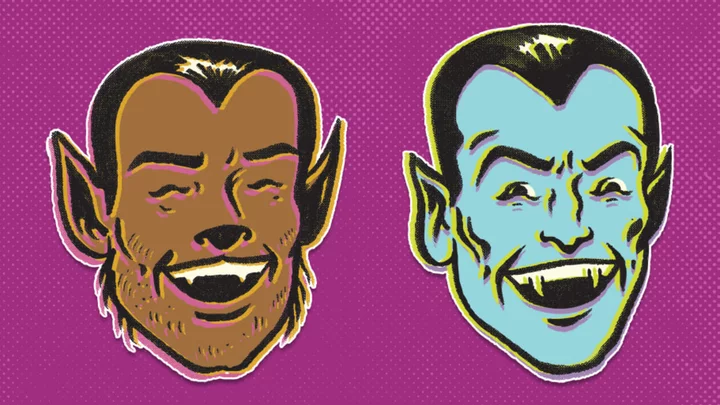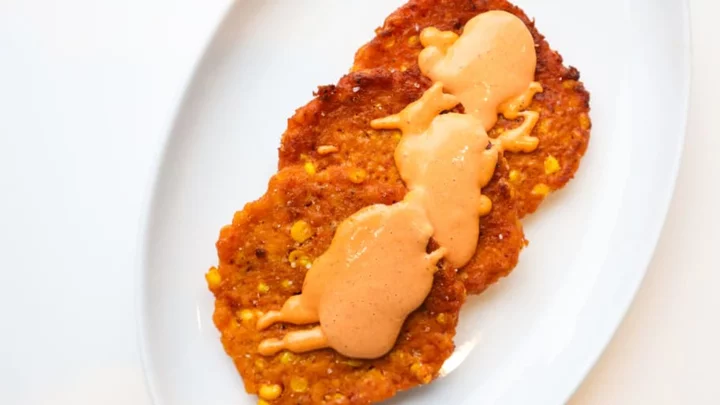The Fourth of July is packed with backyard barbecues and plenty of fireworks. With more than 200 years of history and tradition behind it, you'd be forgiven if you didn’t know everything about America’s Independence Day. From the true story behind the signing of the Declaration of Independence to some staggering hot dog statistics, here are 10 things you might not know about the Fourth of July.
1. The Declaration of Independence wasn’t signed on July 4 (or in July at all).
It might make for an iconic painting, but that famous image of all the Founding Fathers and Continental Congress huddled together, presenting the first draft of the Declaration of Independence for a July 4, 1776, signing isn’t quite how things really went down. As historian David McCullough wrote, “No such scene, with all the delegates present, ever occurred at Philadelphia.”
It’s now generally accepted that the Declaration of Independence wasn’t signed on the Fourth of July—that’s just the day the document was formally dated, finalized, and adopted by the Continental Congress, which had officially voted for independence on July 2 (the day John Adams thought we should celebrate). John Hancock and Charles Thomson signed early printed copies of the Declaration to be given to military officers and various political committees, but the bulk of the other 54 men signed an official engrossed (finalized and in larger print) copy on August 2, with others following at a later date. Hancock (boldly) signed his name again on the updated version.
2. The first Fourth of July celebrations weren’t much different from today’s.
After years of pent-up frustration, the colonies let loose upon hearing the words of the Declaration of Independence in 1776. Military personnel and civilians in the Bowling Green section of Manhattan tore down a statue of King George III and later melted it into bullets [PDF]; Philadelphia patriots used the king's coat of arms as kindling for a bonfire; and in Savannah, Georgia, the citizens burned the king in effigy and held a mock funeral for their royal foe.
Independence Day celebrations began to look a bit more familiar the following year, as the July 18, 1777, issue of the Virginia Gazette describes the July 4 celebration in Philadelphia:
“The evening was closed with the ringing of bells, and at night there was a grand exhibition of fireworks, which began and concluded with thirteen rockets on the commons, and the city was beautifully illuminated. Every thing was conducted with the greatest order and decorum, and the face of joy and gladness was universal.”There were even ships decked out in patriotic colors lining harbors and streamers littering city streets. Modern Independence Day celebrations have stuck pretty close to the traditions started in 1777.
3. Eating salmon on the Fourth of July is a tradition in New England.
The tradition of eating salmon on the Fourth of July essentially began in New England as a coincidence. During the middle of the summer, salmon was abundant in rivers throughout the region, so it was a common sight on tables at the time. The dish eventually got lumped into the Fourth and has stayed that way ever since, even with the decline of Atlantic salmon.
To serve salmon the traditional New England way, you’ll have to pair it with some green peas. And if you’re really striving for 18th-century authenticity, enjoy the whole meal with some turtle soup, like John and Abigail Adams supposedly did on the first Fourth of July. (You can still be a patriot without the soup, though.)
4. Massachusetts was the first state to recognize the Fourth of July.
Massachusetts recognized the Fourth of July as an official holiday on July 3, 1781, making it the first state to do so. Congress didn’t even begin designating federal holidays until June 28, 1870 [PDF], with the first four being New Year’s Day, Independence Day, Thanksgiving, and Christmas. This decreed that those days were holidays for federal employees.
However, there was a distinction. The Fourth was a holiday “within the District of Columbia” only. It took years of new legislation to expand the holiday to all federal employees.
5. The oldest annual Fourth of July celebration is held in Bristol, Rhode Island.
Eighty-five years before the government recognized the Fourth of July as a federal holiday, one tradition began that continues to this day. Billed as “America’s Oldest Fourth of July Celebration,” the town of Bristol, Rhode Island, has been doing Independence Day right since 1785.
The festivities began just two years after the Revolutionary War ended, and 2023 will be its 238th anniversary. Over the years, the whole thing has expanded well beyond July 4; the town of about 23,000 residents now begins to celebrate the United States on Flag Day, June 14, all the way through to the 2.5-mile July 4 parade. What began as a “patriotic exercise”—meaning church services—has morphed into a cavalcade of parades, live music, food, and other activities.
6. The shortest Fourth of July parade is in Aptos, California.
The Fourth of July parade in Aptos, California, is just a hair over half a mile long. Taking up two city blocks, and measuring just .6 miles, this brief bit of patriotism features antique cars, decorated trucks, and plenty of walkers. Afterward, there’s a Party in the Park, where folks can enjoy live music, food, and games.
7. There are around 15,000 Independence Day fireworks celebrations every year.
According to a 2017 American Pyrotechnics Association projection, around 15,000 fireworks displays occur for the Fourth of July holiday (even if some aren’t exactly on July 4). Though pricing varies, most small towns spend anywhere from $8000 to $15,000 for a fireworks display, with larger cities going into the millions, like the Boston Pops Fireworks Spectacular that averages more than $2 million.
Not everyone enjoys the show, though. Fireworks can be particularly stressful for pets, so make sure you’re prepared to keep them calm.
8. Americans eat an obscene number of hot dogs on the Fourth of July.
Americans consume about 150 million hot dogs while celebrating Independence Day. According to the National Hot Dog and Sausage Council, that number of dogs can stretch from Washington D.C. to Los Angeles more than five times.
In 2018, Joey Chestnut scarfed down 74 of those franks, breaking his own world record. That year, Chestnut won the annual Nathan’s Hot Dog Eating Competition for the eleventh time. He won again in 2019, noshing on 71 wieners. In 2020, the reigning champ yet again broke his own world record, devouring 76 wieners.
9. Americans also spend billions on food to celebrate the Fourth of July.
For 2023, the National Retail Federation predicts Americans will spend around $9.5 billion on tasty treats to celebrate the Fourth of July. This includes food and other cookout expenses, averaging out to about $93 per person participating in a barbecue, outdoor cookout, or picnic.
Then comes the booze. According to the Beer Institute, “more beer is sold on and around the Fourth of July holiday than during any other time throughout the year.” Generally, Americans will spend around $1 billion on beer for their Fourth celebrations, and more than $560 million on wine.
10. Three presidents have died, and one was born, on the Fourth of July.
You probably know that both Thomas Jefferson and John Adams died on July 4, 1826—50 years to the day after the Declaration of Independence was adopted. They’re not the only presidents to have died on the Fourth, though; James Monroe—the nation’s fifth president—died just a few years later on July 4, 1831.
Though the holiday might seem like it has it out for former presidents, there was one future leader born on Independence Day. The country’s 30th commander-in-chief, Calvin Coolidge, was born on July 4, 1872.
A version of this story originally ran in 2018; it has been updated for 2023.
This article was originally published on www.mentalfloss.com as 10 Things You Probably Didn’t Know About the Fourth of July.









